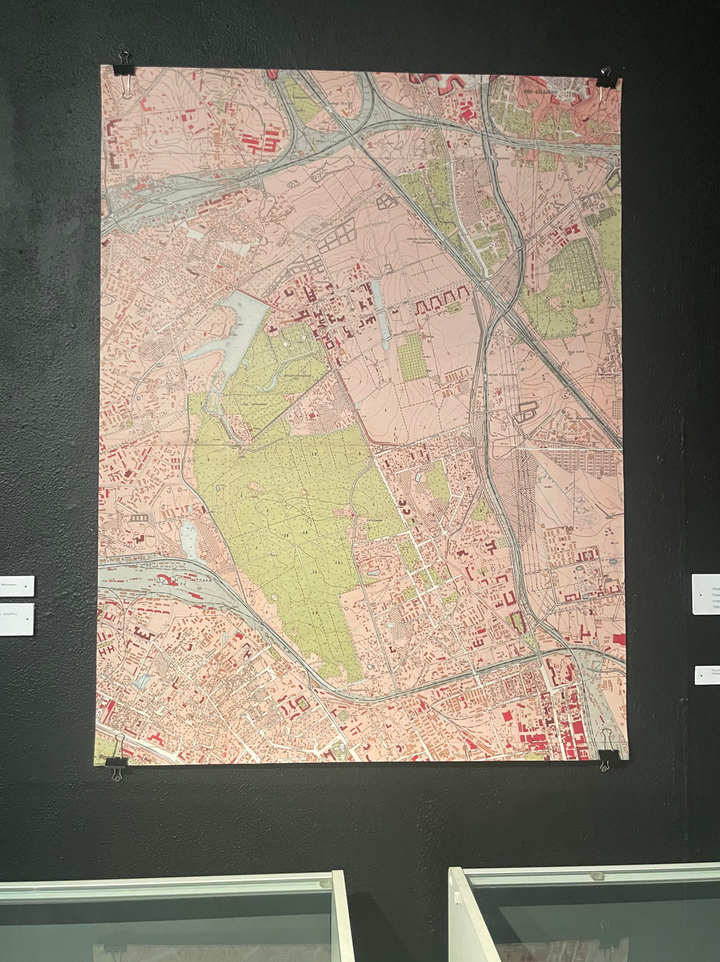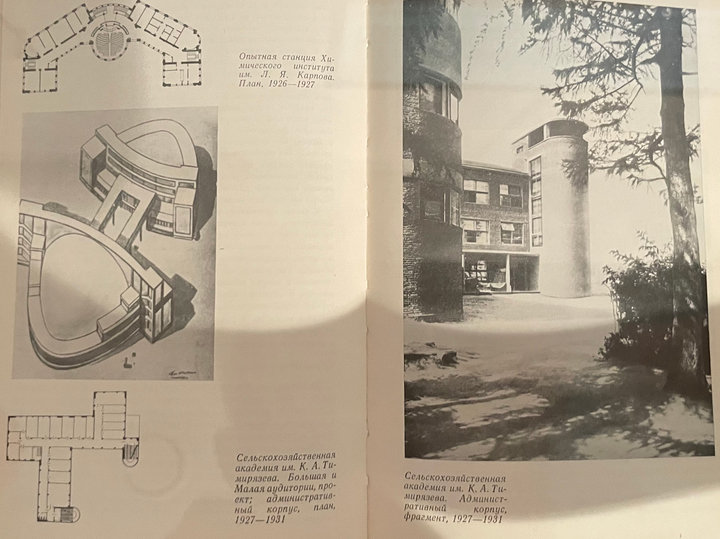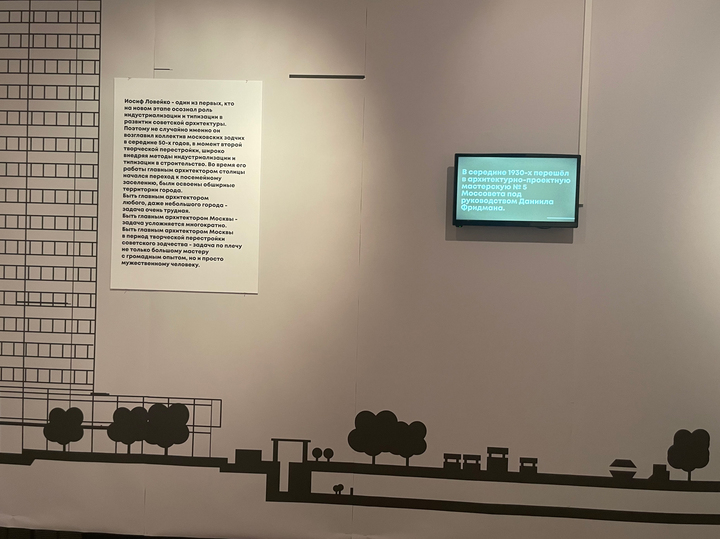The Park Gallery showed the forgotten history of architectural Moscow
[ad_1]
The “Architectural walks: Benois, Iofan, Shukhov, Loveiko” exhibition has opened in the “Park” gallery, which will now become a permanent exposition of the exhibition space near Dubki Park. The project plunges into four stories of architects from different eras and tells about their vision of the Timiryazevsky district. However, the narrative is wider than a single territory. On the examples of implemented and paper projects, or those that were erected, but then disappeared from the map of the city, one can judge how Moscow developed, styles and directions changed, the way of life of people changed. Here everyone can make a journey into the past and at the same time into the future.
The beginning of the exposition takes the viewer to the end of the 19th century and introduces the projects of the architect Nikolai Benois, who built the main building of the Timiryazev Academy in neo-baroque style with its famous convex window panes and a clock tower. The “Rectorate” – this is the name of the building, recognized as an architectural monument – was erected on the site of the Razumovsky manor house, and the architect paid tribute to the history of the place when designing. The facade of the building looks like a palace, and the back side looks like a manor.

At the exhibition, you can see old photographs of the 1870-80s, which show that the Benois project has hardly changed its appearance over a century and a half. The city around has changed – the pulse of Moscow began to beat more often, and the speed of life increased significantly. And the Benois project reminds us today of the pre-revolutionary, more measured rhythm, when local residents leisurely strolled along Larch Alley, admiring the majestic building. Next to these yellowed photographs are copies of watercolors by the son of the architect Alexander Benois, a well-known artist and founder of the World of Art association. Before us are his sketches, made in the vicinity of the Louvre – the place is different, but the mood is the same, manor-noble. Here you can also see in detail the map of 1861, when the building was just begun to be erected (it was completed in 1865), which shows the streets, the forest, the experimental fields of the academy. The “skeleton” of the territory has remained the same, although some fields are now built up, the density of the housing stock is higher, high-rise buildings have grown in place of wooden houses. But that past history still flows through the veins of the district.

The next hero of the architectural walk is Boris Iofan. The same author of the Palace of Soviets, which was planned to be erected on the site of the Cathedral of Christ the Savior. Here we have the early experiments of the architect, and they are very interesting. Before leaving for scale and imperial style, Iofan was a constructivist. Returning from an internship from Italy in the late 1920s, he became the chief architect of the Timiryazev Academy and decided to build a science city – the Timiryazevsky town. The project was partially implemented – only four buildings were erected. The main building, resembling a cut sphere and at the same time a spaceship, did not happen, which is a pity. The project is striking – with an interesting form, concise and functional solution. It was not possible to bring to life the projects of the physical building and the library.

On the other hand, administrative, collective farm, agro-pedagogical and chemical buildings were built (although the last of those listed was later moved to another place). The sketches and sectional plans of the facade and buildings presented at the exhibition destroy all the stereotypes about Boris Iofan as an architect of giant buildings with pretentious design. He made the science city completely different.
– Do you think Iofan became disillusioned with constructivism or changed to a different tone for external, including political, reasons? I ask one of the curators of the exhibition, Nikita Spiridonov.
– I think he kept his nose to the wind and felt the trends of the era. It is unlikely that such a turn was his creative will. He understood the demand of the time. I don’t think it was a natural movement.
From Boris Iofan to Vladimir Shukhov. Today, everyone is talking about the famous Shukhov Tower – one of the most famous Moscow sights, which celebrated its 100th anniversary last year and which is still not being restored. But there were once many such towers – more than 200. One of them was in the Timiryazevsky district. Now little is known about her fate, but the curators of the exhibition managed to restore some details of the story. The tower was located on the territory of the Timiryazev Academy next to the training farm (building number 5). Now in its place is a flower bed. Several photographs have been preserved, from which Shukhov’s style is easily guessed. I managed to find information in the scientific library about what the water tower was like: the height is 16 fathoms (about 30 meters), it stood in its place from 1933 to the 1960s. After 30 years, it was dismantled for technical reasons: it was built in the 1930s from cheap, short-lived materials.

At the end of the exhibition, we find ourselves in front of a plan of the district of the 1950s – it occupies an entire wall. Its author is Iosif Loveiko, who was the chief architect of Moscow from 1955 to 1960. The section of Dmitrovskoye Highway looks like a picture from the future – the project was designed so harmoniously that it is still relevant today. Everything is in balance: highway, parking, underground passages, landscaping, residential complex. The Timiryazevsky project conceived by the architect, 16 kilometers long (from the Garden Ring to the Moscow Ring Road), however, did not happen, although it looks very thoughtful in the plans published in the journal Architecture and Construction in the late 1950s.
Loveyko also planned to build a building at the entrance to the Dubki park – the majestic building of the Institute of Water Management in the sketch resembles a palace. Nearby is a map showing the ratio of brick and wooden houses at that time – village houses predominate, brick houses can be counted on the fingers of one hand. Now it’s the other way around. That is, Loveiko, like many dreamers of the post-war period, hoped to radically transform this place and create an ideal environment for life here. But history decreed otherwise.
Leaving the gallery, you can take a walk around the neighborhood and appreciate what architectural ideas have taken place and how they now fit into the structure of the city. Such immersion allows you to take a different look at the modern architectural landscape.
[ad_2]
Source link






